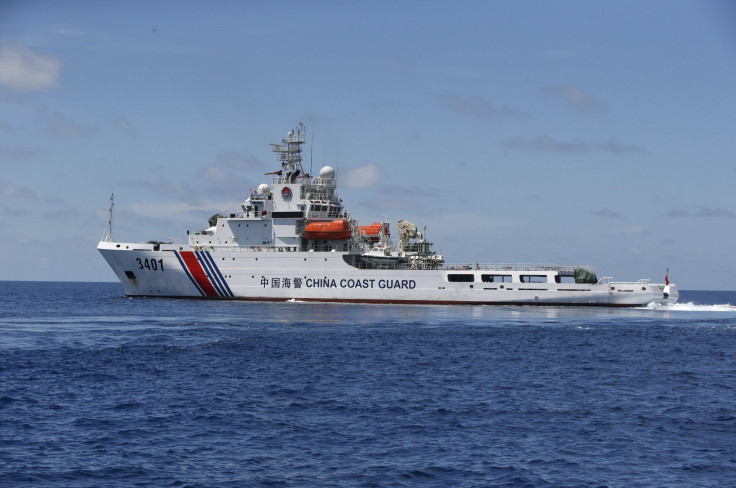South China Sea Update: Chinese Ships Operating Inside Philippine-Claimed Zone For A Week
A high-ranking official from the Philippine Navy is calling for a diplomatic protest over the weeklong presence of Chinese vessels in contested waters of the South China Sea.
Vice-Admiral Giovanni Bacordo informed the Foreign Correspondents Association of the Philippines Monday that Chinese vessels moving at a speed of "about three knots" had been near the Reed Bank for about a week, the South China Morning Post (SCMP) reported.
According to Bacordo, the three-knot speed is an indication that the ships were conducting surveys. He told the group, "We have reported this already … and request the filing of a diplomatic protest. We have checked if they have clearance to be there. We found out there is none."
The Reed Bank lies in a resource-laden area about 85 nautical miles from the Philippines’ Palawan Island and 595 nautical miles from the coast of China’s Hainan province. A 2016 United Nations Permanent Court of Arbitration (PCA) in The Hague ruled in favor of Philippine's claim of the island that lies within the country’s exclusive economic zone (EEZ).
China continues to ignore the ruling, but it gives Philippine President Rodrigo Duterte a degree of leverage in negotiations over what he calls "whatever there is in the bowels of the earth." Last year, Duterte and Chinese President Xi Jinping discussed a joint oil and gas exploration deal that would give the island nation a 60% share of any discoveries. The talks are now stalled due to the coronavirus outbreak and the resulting global pandemic.
On Sunday, one day before Bacordo made his statements calling for the diplomatic protest, Philippine Foreign Secretary Teodoro Locsin Jr. said, "as far as I know we’ve stopped all marine surveys by foreign ships because, while they follow the rule that [any survey] must contain Filipino scientific crew...[our crews are treated] like mushrooms: fed on [muck] and kept in the dark."
This is in addition to the United Nations Convention on the Law of the Sea (UNCLOS) guideline that there should be consent when entering another country’s EEZ.
Bacordo said that despite the treatment of any Filipino crew plus not getting the clearances, that Chinese naval, coastguard, and fishing vessels continue to "loiter" in the contested area and that the People's Liberation Army (PLA) Navy vessels may be trying to goad the Philippines into taking aggressive action.
"The way I analyze it, in our dispute in that area, the first one to fire the [first] shot becomes the loser. So, they will do everything for us to take aggressive action. But we have to be patient with that," SCMP quoted the Vice-Admiral, as saying.
What may have prevented the first shot was a 2014 symposium made up of 31 navy chiefs including the one from China, who agreed on a Code for Unplanned Encounters at Sea (CUES) to reduce incidents in the disputed waters.
Bacordo talked about the protocol before the CUES symposium and explained, "when you saw a grey [Chinese] ship, you went to general headquarters or you assumed the highest alert, you manned your guns, put on your fire control systems."
The CUES protocol is to establish communications with the foreign vessel, ask where it was headed, which port it came from, and its intentions.

© Copyright IBTimes 2025. All rights reserved.





















